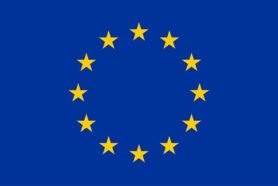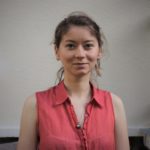WP3: Scenarios
ESR contributionsIntegrating climate change scenarios with chemical emissions, fate and effects models of agricultural and urban systems😀 Urban chemicals emissions scenarios for 2050From artificial sweeteners in food to bisphenol A in plastic, the daily usage of chemical is massive. Urban environment like cities are chemical pollution hot spots because of population density, urbanization and ineffective waste water treatment plants. My name is Alizée Desrousseaux and I am conducted my research at the University of York, United-Kingdom. The aim of my project with ECORISK2050 is to develop chemicals emissions scenarios for the year 2050 for the cities of York (UK), Madrid (Spain) and Oslo (Norway). To do so, I will first study chemicals in urban fresh water systems: What chemicals are detected? How many cities have conducted research on their fresh water systems? Are chemicals detected in similar concentration across cities or across countries? The second part of my research will focus on prioritization of chemicals to be able to determined which chemicals present a risk for living organisms: fish, algae, microorganisms, plants… but also for the quality of fresh water. We will conduct a 1-year monitoring campaign in York, Madrid and Oslo fresh waters systems to quantify priority chemicals and to analyze the current chemicals pollution of cities. Last, within my work package, I will develop a framework to develop chemical emissions scenarios for the future to be able to study how chemicals pollution could look like under different socio-economics societies. For my project, I will focus the development of scenarios for the urban environments of York, Madrid and Oslo.” Agricultural emission scenarios for different regions of Europe😀
Objectives3.1 Development of chemical emission scenarios of agricultural and urban systems in Europe under GC, considering circular economy and non-toxic environment options. 3.2 Development of agronomic land use and management scenarios for different representative climate and socio-economic scenarios. 3.3 Identification of main pest pressures considering farm management options under the named scenarios. 3.4 Estimation of chemical inputs under different environmental characteristics of selected European agricultural and urban systems. Description of Work and Role of Specific Beneficiaries / Partner OrganisationsESR 1 at UU will develop combined climate/land use/agronomic management scenarios for selected case study regions in the future. Existing climate models are downscaled to the catchment scales for the selected regions, with special emphasis on changes in temperature, rainfall intensities and droughts. Existing Shared Socio-Economic Pathways (SSP) scenarios of land use and agricultural change, based on the IMAGE (Integrated Assessment of Global Environmental Change) model, will also be downscaled to 5 minute resolution (10×10 km). With current databases of chemical emissions of pesticides and veterinary medicines, geographical maps are made on environmental quality depending on land use. Technological assessments of emission reduction are assessed based on future sustainable production systems (livestock and crop). These downscaled scenarios will be compared to the bottom-up approach from ESR3 and further tailored if necessary. ESR 1 results will be used for ESR2-3, ESR6 for the STREAM-EU model, and ESR12 (mitigation options for future improvement). ESR2 at UoY, addressing urban systems, starts with a development of an inventory of the major types of chemicals (including pharmaceuticals, personal care products, paints and coatings, home-use pesticides, chemicals emitted by vehicles) used in urban systems. Using case-study urban systems located in Northern, Central and Southern regions alongside existing usage data and models and projections of future change partly depending on the same SSPs as used within ESR1 (demographics, migration, human disease, climate change mitigation strategies, changes towards a circular economy and technological developments) we will then develop emission scenarios for different chemical classes for the current situation and for 2050. GIS mapping will allow us to visualise how emissions of urban-associated contaminants to urban river systems via both point and diffuse emissions will change over time. ESR2 results will be used to inform the exposure modelling activities in WP4 (ESR 4,6) and in the risk assessment activities in WP6 (ESR 13). ESR3 at BOKU will identify challenges of pest pressure and chemical inputs in regard to farming options in the future broken down to farm level (bottom-up approach), involving partners in the field of operational pest monitoring and warning. Hot spots of critical chemical emission risks (e.g. based on representative information of land use, orography, timing of crop management options) will be identified additionally using local datasets, and considering multiple weather risks. Feedbacks from farm level simulation will be used for specifying ESR1 downscaling processes. ESR3 results will used for WP 4 (ESR4) and the risk assessment work in WP 6 (ESR6). Working Package Deliverables3.1 Global climate/land use/agronomic management and emission scenarios downscaled to the three case study regions 3.2 Chemical emission scenarios of urban systems in selected case study regions 3.3 Chemical emission scenarios from pest management options under scenarios in selected agricultural systems |

 This project received funding
from the EU Horizon 2020 program
under Marie Sklodowska-Curie
grant agreement No 813124
This project received funding
from the EU Horizon 2020 program
under Marie Sklodowska-Curie
grant agreement No 813124

